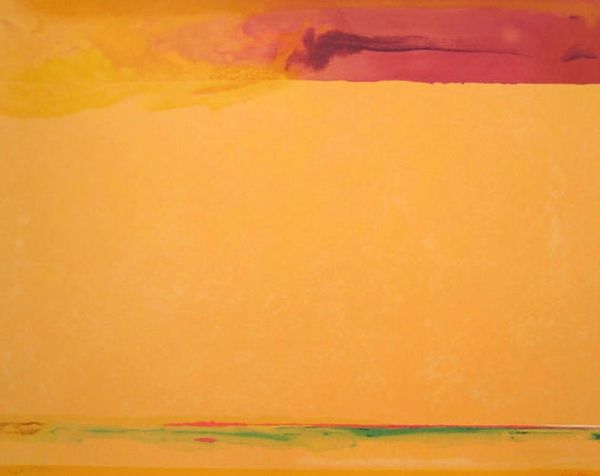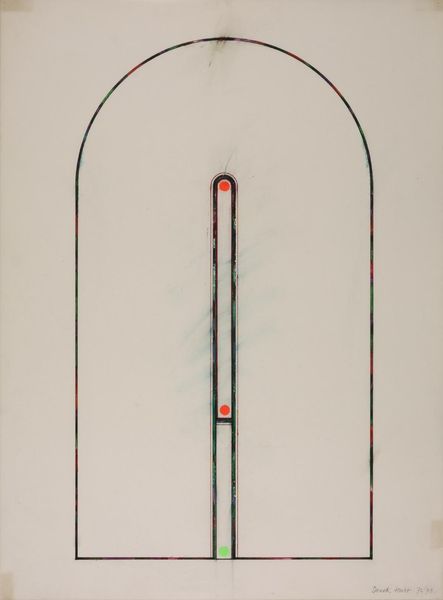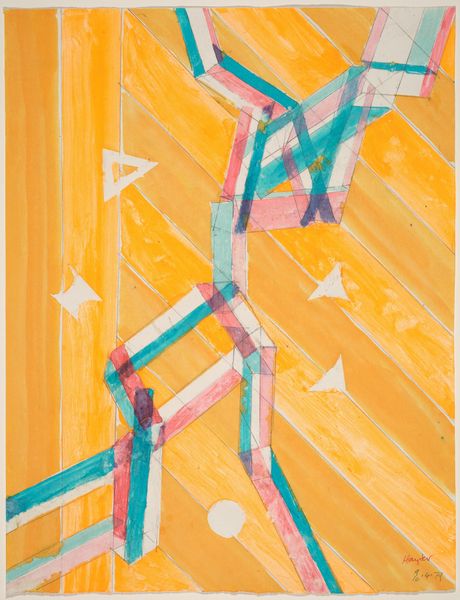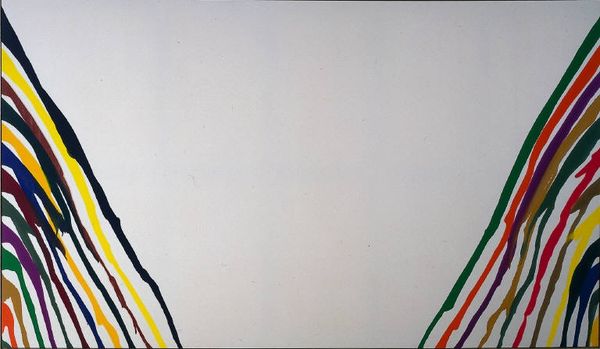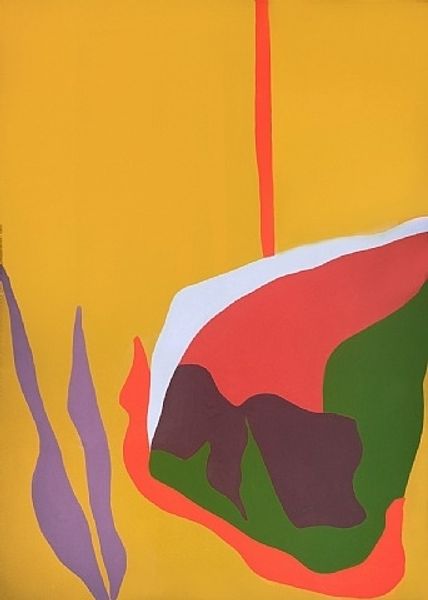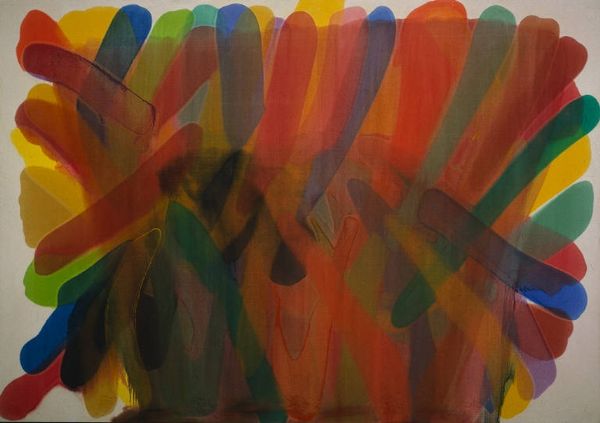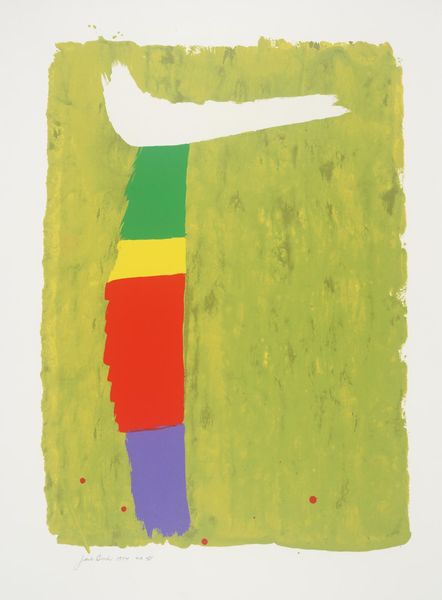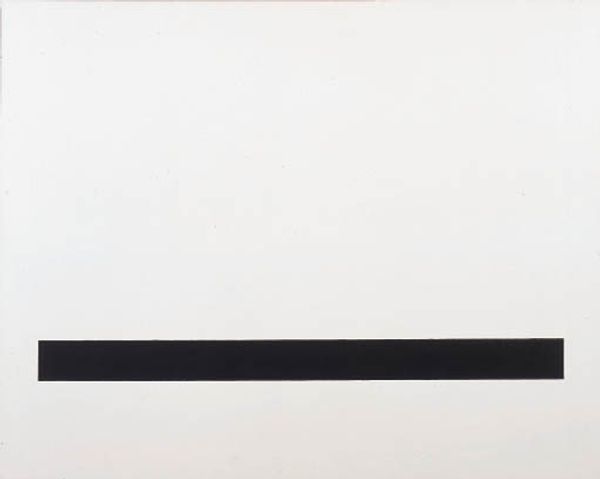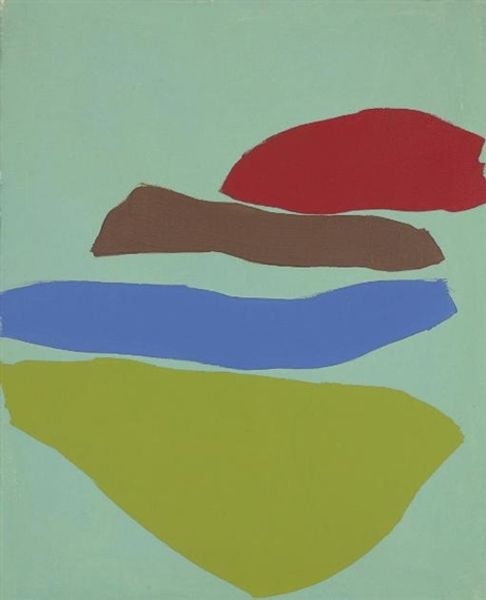
Copyright: Sadamasa Motonaga,Fair Use
Curator: Here we have Sadamasa Motonaga’s “Like a Dragonfly” from 1979. It's an acrylic on canvas. The abstract composition immediately strikes me as quite serene, almost meditative. What are your initial thoughts? Editor: Well, the layered horizontal color fields give a manufactured quality reminiscent of textiles and even some screen-printing processes that rely on careful layering and registration. The very smoothness is key here. Curator: Yes, the smoothness emphasizes the intentionality. Observe how Motonaga orchestrates geometric and biomorphic forms, challenging a singular focal point. The balance and visual weight intrigues me, given the seeming simplicity. Editor: Agreed. Note how the flat acrylic, coupled with the sharp, defined edges of the shapes, underscores its fabricated nature. It moves it away from pure art gesture and emphasizes making as production. Is the "dragonfly" merely applied over these colored fields? Curator: In a sense, yes. These superimposed elements are not subservient to some illusionistic depth; instead, they participate in the flat picture plane. Do you feel it echoes earlier post-impressionist impulses towards abstraction? Editor: Partially, but I also feel its stark presentation and conscious embrace of artifice foreshadow aspects of the Pictures Generation's critique of the image. It embraces manufactured qualities in making meaning. Curator: Interesting observation! It is that material consciousness that really activates the piece for me, too. Editor: Exactly! By making its construction so apparent, the artist draws attention to the entire production—highlighting not only creativity, but deliberate assembly of an aesthetic experience. Curator: Thank you. Motonaga achieves that with masterful precision of his color palette, and confident strokes and placement. "Like a Dragonfly," the title, hints towards his intent to ground abstraction to recognizable forms, while prompting much conversation to be had. Editor: I would concur. Viewing artwork with attentiveness to labor, in "Like a Dragonfly" for example, grants audiences additional points of entry towards better comprehension of its purpose and method.
Comments
No comments
Be the first to comment and join the conversation on the ultimate creative platform.


